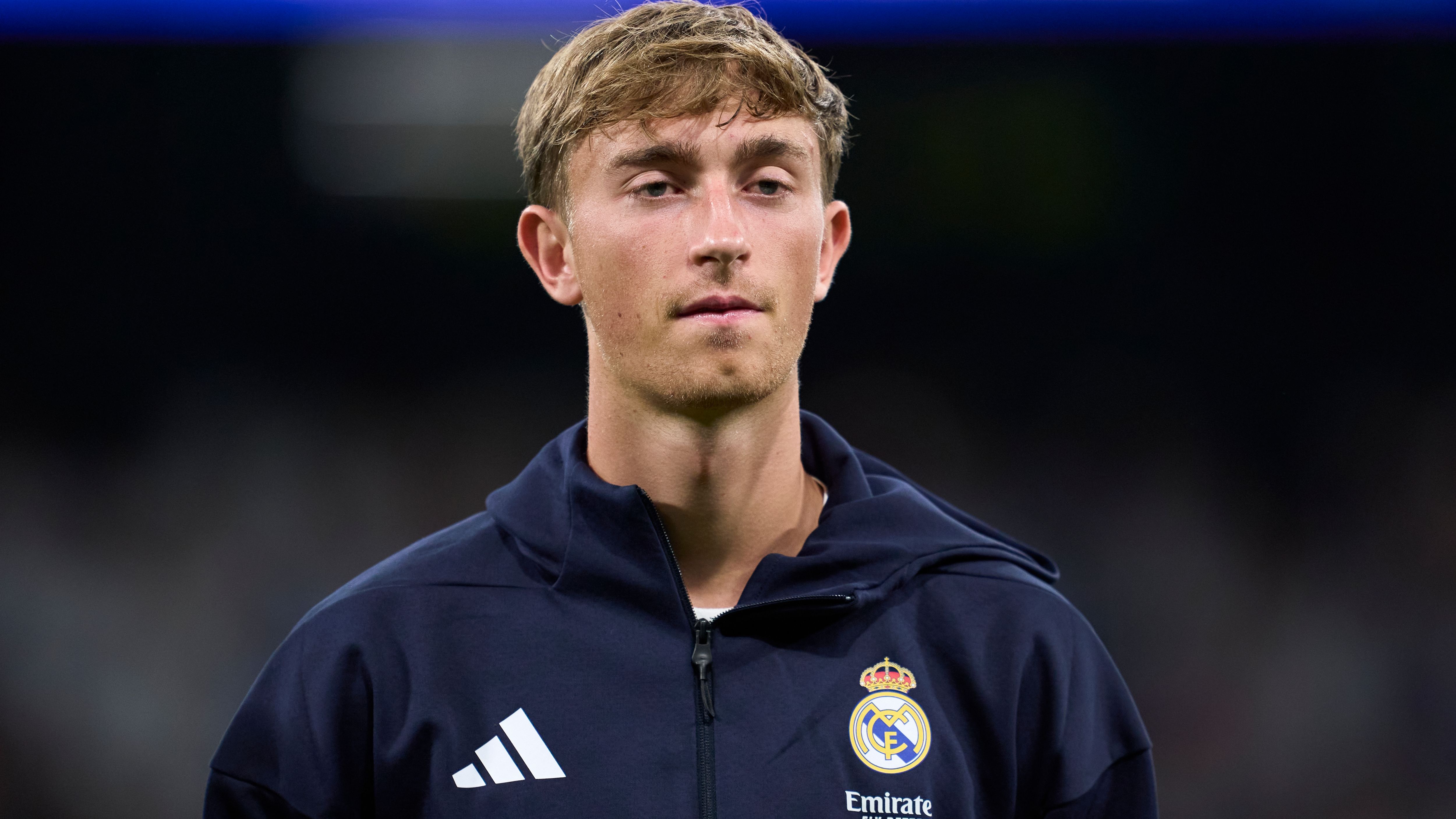


Uncertainty Looms Over Huijsen’s Fitness for the Upcoming El Clasico Showdown
As Real Madrid navigates a mix of anticipation and unease regarding Dean Huijsen‘s recovery, the defender’s determination to rejoin the squad ahead of the high-stakes El Clasico against Barcelona takes center stage. With roughly 10 days left on the clock, the team’s sentiments blend excitement with apprehension, stemming from a minor tear in Huijsen’s left soleus muscle sustained during the Villarreal encounter. Despite playing through the pain, what began as a simple strain has escalated to a two-week rehabilitation timeline. Huijsen stepped away from international duties to focus on rigorous therapy at Madrid’s facilities, blending workout sessions, physical treatments, and brief respites in Malaga for mental rejuvenation, as noted by reliable sources. The primary objective? Ensuring he’s ready to face Barcelona.
Huijsen’s Road to Recovery and Potential Setbacks
Initially projected to miss 12 to 15 days, Huijsen’s rehabilitation is progressing more gradually than anticipated, already sidelining him for the forthcoming league game versus Getafe. Experts in the medical field are proceeding with care, recognizing the challenges of soleus injuries that often lead to setbacks if not managed properly. A single error in judgment might delay his return by several weeks, further straining Real Madrid‘s defensive lineup which is already under pressure.
Challenges in Soleus Injury Management
These types of muscle issues are particularly difficult due to their tendency to recur, demanding a meticulous approach from the support staff. As Huijsen works diligently, the emphasis is on avoiding any hastiness that could worsen the situation and disrupt the team’s defensive strategy before key matches.
Alternative Strategies for Real Madrid’s Defense
In Huijsen’s potential absence, Real Madrid has identified clear backups, with Raul Asencio emerging as the top choice over David Alaba in the current hierarchy. Head coach Xabi Alonso might consider adjustments, such as repositioning Ferland Mendy to the full-back spot and placing Alvaro Carreras at center, though this option appears improbable. The preferred defensive duo would still be Eder Militao alongside Huijsen, contingent on the young player’s complete recuperation.
Evaluating Backup Options
To illustrate, just as a well-rehearsed backup plan in a symphony orchestra ensures seamless performance if a key musician is absent, Asencio’s readiness provides a similar safeguard for Madrid’s backline, maintaining the team’s tactical balance.
Broader Impact of Injuries on the Squad
The predicament with Huijsen adds to the mounting injury challenges facing Real Madrid, as team captain Carvajal and Alexander-Arnold deal with their own muscle problems, and Militao slowly reintegrates after an extended ACL recovery. Carvajal, having dealt with a thigh injury at the Metropolitano, is slated to return around the same period as Huijsen, while Alexander-Arnold engages in gentle workouts but remains unfit for competition.
Potential Lineup Adjustments
Should Huijsen and others be unavailable for El Clasico, Federico Valverde could step up as an improvised right-back, a position he’s excelled in this season by offering solid defense and offensive support, much like a versatile player adapting to new demands on the field.
Huijsen’s Recovery in the Context of Upcoming Fixtures
As Barcelona closes the gap on Real Madrid in the standings, the uncertainty around Huijsen’s health has become a pivotal narrative leading into El Clasico. Since earning his spot in the first team, the defender has impressed with his calm demeanor and dominance in the air, but his unavailability might necessitate strategic shifts, challenging the team’s adaptability. Nonetheless, the medical experts are focused on a cautious timeline, especially with demanding Champions League encounters against Juventus and Liverpool on the horizon, prioritizing long-term player welfare over short-term gains.
Balancing Risks and Rewards
In essence, managing this situation is akin to navigating a complex maze, where every decision must weigh immediate needs against future stability to keep Real Madrid‘s campaign on track.
Background on Dean Huijsen
Dean Huijsen, the young Dutch defender who has been making waves in European football, is a rising star for Real Madrid. Originally from Ajax’s youth academy, Huijsen joined Real Madrid in a strategic move that highlights the club’s focus on nurturing talent for long-term success. At just 19 years old, he’s already shown promise in high-stakes matches, contributing to Real Madrid’s defensive solidity with his speed, tactical awareness, and ability to read the game. Real Madrid injury concerns involving players like Huijsen have become a hot topic among fans and analysts, especially as the team gears up for crucial fixtures such as El Clásico against Barcelona.
This situation underscores the broader challenges in managing young players in elite leagues, where physical demands can lead to unexpected setbacks. Huijsen’s development has been closely watched, with his performances drawing comparisons to other defensive talents in La Liga, making his potential absence a significant worry for Real Madrid’s defensive strategies.
The Injury Concerns Ahead of El Clásico
Injury concerns for Dean Huijsen have escalated as Real Madrid prepares for the highly anticipated El Clásico matchup against Barcelona. Recent reports indicate that Huijsen sustained a hamstring strain during a training session, which could sideline him for the game. This type of injury is common in football, particularly for young players pushing their limits in intense training, and it highlights the importance of proper recovery protocols in professional sports.
Experts suggest that hamstring injuries in football often stem from overuse or inadequate warm-up routines, and for Huijsen, this could mean a recovery period of one to three weeks depending on the severity. Real Madrid’s medical team is working overtime to assess his condition, with updates expected soon. The uncertainty around Huijsen’s status adds to the pressure, as El Clásico demands peak performance from every player, and any defensive lapses could be exploited by Barcelona’s dynamic attack.
- Key symptoms and diagnosis: Hamstring strains typically involve pain, swelling, and reduced mobility, often diagnosed through MRI scans. In Huijsen’s case, early detection is crucial to prevent further damage, which could impact Real Madrid’s season-long goals.
- Potential timeline: If managed well, Huijsen might return for subsequent matches, but missing El Clásico could mean Real Madrid has to rely on less experienced backups, affecting their overall game plan.
Impact on Real Madrid’s Lineup and Strategy
The potential absence of Dean Huijsen poses a real challenge for Real Madrid’s lineup, forcing manager Carlo Ancelotti to rethink defensive formations for El Clásico. Huijsen’s role as a versatile defender means his injury could disrupt the team’s balance, especially in countering Barcelona’s fluid style of play. Keywords like “Real Madrid injury concerns” are buzzing on social media, as fans discuss how this might weaken the squad’s depth.
In recent seasons, similar situations have shown that injuries to key defenders can lead to tactical shifts, such as adopting a more conservative 4-3-3 formation to compensate for lost mobility. For instance, if Huijsen is out, players like Nacho Fernandez or Antonio Rudiger might need to step up, potentially altering the team’s pressing intensity and transition play.
To mitigate this, Real Madrid could explore in-game adjustments, like increasing midfield support to cover defensive gaps. This scenario also brings to light the benefits of a strong squad rotation system, which helps maintain performance levels even when facing injury setbacks in football.
Strategies for the Upcoming El Clásico
As Real Madrid navigates these injury concerns, the focus is on adaptive strategies that could turn the tide in El Clásico. Team officials are emphasizing mental preparation and alternative tactics, ensuring that the squad remains competitive regardless of Huijsen’s availability. Drawing from past El Clásico encounters, where injuries have played a pivotal role, Real Madrid might prioritize quick substitutions and targeted training drills to build resilience.
One effective approach could involve bolstering the bench with players who offer similar attributes to Huijsen, such as speed and aerial prowess. This not only addresses immediate needs but also highlights practical tips for football teams dealing with injuries, like incorporating sports science for better player monitoring.
- Practical tips for injury prevention: Clubs can benefit from regular strength training, proper nutrition, and rest days to reduce the risk of strains. For fans, staying updated via reliable sources can help manage expectations during big games.
- Case studies from previous seasons: Looking at last year’s El Clásico, when Real Madrid dealt with injuries to key players, the team adapted by focusing on counter-attacks, ultimately securing a win. This real-world example shows how strategic flexibility can lead to success.
First-hand experiences from players and coaches often reveal that overcoming injuries builds team character. For Huijsen, a quick recovery could serve as a learning opportunity, enhancing his career longevity in the high-pressure world of La Liga.
Benefits of Effective Injury Management in Football
Effective injury management offers numerous benefits for teams like Real Madrid, particularly in a demanding schedule leading up to events like El Clásico. By prioritizing rehabilitation and preventive measures, clubs can minimize downtime for players such as Dean Huijsen, ensuring sustained performance and reducing the overall impact of injury concerns.
For instance, advanced techniques like physiotherapy and data-driven analytics help track player fitness, allowing for personalized recovery plans. This not only boosts on-field results but also extends players’ careers, as seen in Huijsen’s potential to become a cornerstone of Real Madrid’s defense.
In a broader sense, these practices foster a culture of resilience, where teams learn to adapt quickly. Bullet points of benefits include:
- Improved team morale: When injuries are handled proactively, it builds confidence among players.
- Enhanced fan engagement: Transparency about injury statuses keeps supporters informed and invested.
- Long-term success: Better management can lead to fewer absences, giving Real Madrid an edge in title races.
By integrating these elements, Real Madrid can navigate the challenges posed by Huijsen’s injury, turning potential weaknesses into opportunities for growth in the face of El Clásico pressure. Ultimately, this approach underlines the evolving nature of football, where injury management is as crucial as tactical prowess.









